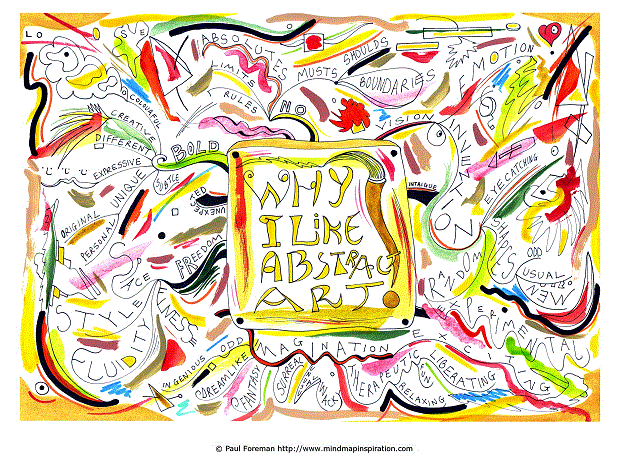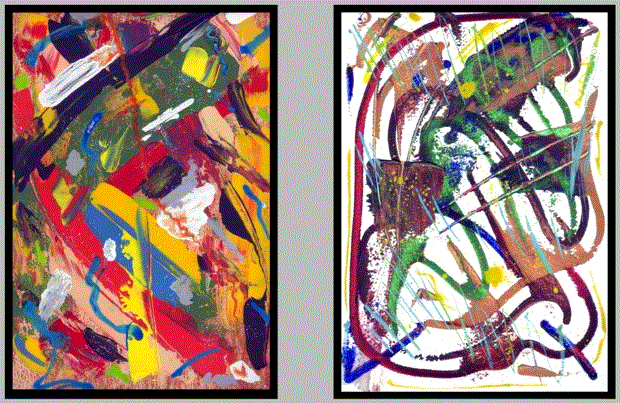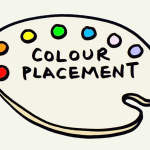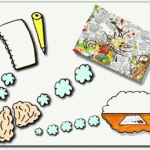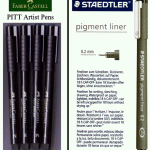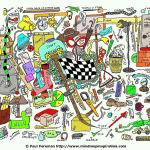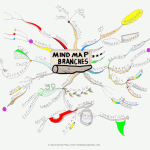Several years ago I decided to learn everything I could about abstract art. It soon dawned on me that by “learning everything I could about abstract art” I was only ever destined to become a carbon copy of existing abstract artists. I discovered a phrase in a book that said “In abstract art there are no rules” and that changed everything. I started to create my art in “my” style; yes there were influences and preferences, however, the focal points were freedom of personal expression and effortless flow.
During my exploration of abstract art and artists I came across a wonderful excerpt:
In the 1950’s there was an anecdote about Newman that became an anthology piece. Franz Kline and Elaine de Kooning were sitting at the Cedar Bar when a collector Franz knew came up to them in a state of fury. He had just come from Newman’s first one-man show.
“How simple can an artist be and get away with it?” he sputtered.
“There was nothing, absolutely nothing there!”
“Nothing? Asked Franz, beaming. “How many canvases were in the show?”
“Oh, maybe ten or twelve – but all exactly the same – just one stripe down the centre, that’s all!”
“All the same size?” Franz asked.
“Well, no; there were different sizes; you know, from about three to seven feet”
“Oh, three to seven feet, I see; and all the same colour?” Franz went on.
“No, different colours, you know; red and yellow and green…but each picture painted one flat colour – you know, like a house painter would do it, and then this stripe down the centre”
“All the stripes the same colour?”
“No.”
“Were they the same width?”
The man began to think a little. “Let’s see. No. I guess not. Some were maybe an inch wide and some maybe four inches, and some in between.”
“And all upright pictures?”
“Oh no; there were some horizontals.”
“With vertical stripes?”
“Uh, no, I think there were some horizontal stripes, maybe.”
“And were the stripes darker or lighter than the background?”
“Well, I guess they were darker, but there was one white strip, or maybe more…”
“Was the stripe painted on top of the background colour or was the background colour painted around the stripe?”
The man began to get a bit uneasy. “I’m not sure,” he said, “I think it might have been done either way, or both ways maybe…”
“Well, I don’t know,” said Franz. “It all sounds damned complicated to me.”
Thomas B.Hess,
Barnet Newman, MoMA, 1971
When I let go of concepts and guidelines my best work (work I liked) birthed itself; often surprising me because I had also let go of the choice-maker – the voice within that said blue “should” go here and yellow “should” go there. The result of letting go became the art; an expression of me in my way. I operated without thought, often using the painting as a meditation. I have not shared my abstract art publicly; primarily because I created the art for therapeutic reasons and for the love of creating it. What I found by dropping the rules was that my abilities to produce art that I liked were infinite.
I’ve created hundreds of paintings; here are two examples of my abstract art:
Dropping the rules allowed total freedom. If you use the same jelly mould, every jelly looks the same – I discarded the mould and invented from within in silence. That meant no books, no Google searches, no comparisons, no pencil planning – just paint and paper (and occasionally canvas). Every painting was unique, many are totally different to the above two examples, and I also decided to view the finished paintings without thought as well as create without thought; no criticising or defining. I simply looked at each painting as an individual expression of my inner desire to create. Observing without labelling opens up a whole new way of appreciating art; if you try it with paintings you know and like you may see them in an entirely new way. Viewing without thought can create movement and excitement, drama, stillness or nothing.
Creating abstract art got me thinking about nature and the fact that it doesn’t organise itself into a pleasing composition – it just is as it is.
When I create abstract art, if I like it without knowing why that adds to the enjoyment and intrigue.
The flow that comes from letting go is breathtaking.
Might you be able to lose some rules and explore more flow in your chosen area?
More from Mind Map Inspiration:
Submit your review | |

